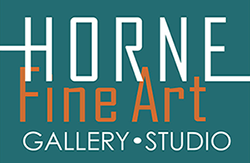“Utah’s First Lady of the Arts”

Born in a log cabin in Fillmore, Utah in 1868, Alice Merrill Horne went on to make extraordinary contributions to her state. The authors of Artists of Utah (1999) describe her as “one of the most active civic and cultural movers that Utah has ever called citizen.”
In 1898, at the age of 30, Alice Merrill Horne ran for the 3rd Utah Legislature. She already had an arts agenda in mind. Once elected, she authored the legislation, an “Art Bill”, creating the Utah Arts Institute (forerunner to the present-day Utah Division of Arts & Museums). Upon passage, this established the first state-sponsored arts agency in the nation and served as a model for the National Endowment for the Arts (NEA). She established an annual statewide visual arts competition through which paintings would be purchased for a permanent state arts collection. This expanding collection, originally dubbed the Alice Art Collection, now numbers over 1,200 pieces, and is valued in the millions. It is a dynamic collection adding powerful contemporary Utah artworks to earlier masterpieces. In early 2018, the Utah State Legislature unanimously passed a bill renaming the collection, the “State of Utah Alice Merrill Horne Collection”.
Alice’s support and promotion of early Utah artists took many forms. She formed over three dozen collections of Utah Art in public schools. These have been nicknamed the “Milk Money” project, since on some occasions, children chipped in their milk-money to help fund the purchase the paintings for their school. Alice believed that all children, no matter their parent’s means, would be inspired by direct, daily exposure to quality original art. Museum quality art came right to school hallways and classrooms.
Over the decades she presented hundreds of fine art exhibitions in various venues including the Newhouse Hotel, the ZCMI Tiffin Room, Zion’s Bank, as well as her own gallery in the Avenues. Her efforts were both practical and idealistic—to provide the artists with income “they cannot paint if they cannot eat”—and to enrich the cultural life of the state. Details of these exhibitions was spread in her brochure periodical, “Art Strands.” Alice also published the Utah Art Handbook, “Devotees and Their Shrines” in 1914.
Beyond the arts agenda, Alice Merrill Horne was a civic-minded visionary. She penned legislation setting aside the land grant for the University of Utah. One of her projects promoting public health was to develop fresh milk stations to aid families without refrigeration. She was an early preservationist and environmentalist, fought for clean air, demonstrating cleaner coal alternatives wearing white gloves, and helped save Eagle Gate from demolition.
An accomplished artist in her own right, Alice Merrill Horne, studied with J. T. Harwood, Mary Teasdel and John Hafen. Her still life paintings show convincing skill and refinement. However, her primarily legacy was as an advocate and dealer for other artists, including notable figures in Early Utah Art including Mahonri Young, J. T. Harwood, John Hafen, Mary Teasdel, Minerva Teichert, Florence Ware, and Henry Moser. Many of these artists nicknamed her “Mother Horne” because of the way she encouraged and supported their talents.
Alice was the mother of six children of her own, and inspired a passion for art and culture among many of her descendants. One of Alice’s great-granddaughters, Karen Horne, recalls being influenced by her story and the early Utah paintings and drawings in the family collection. Karen has devoted her own life to creating and presenting art. She feels her roots as an impressionist hark back to her early exposure to those vibrant paintings.







